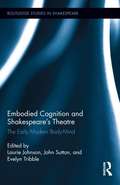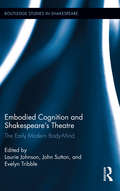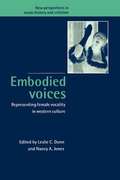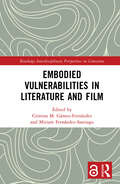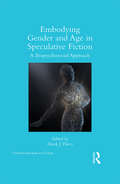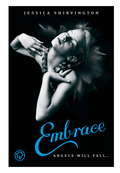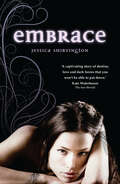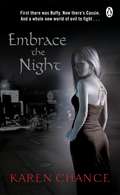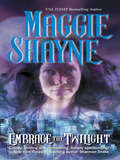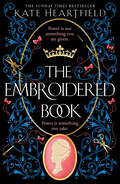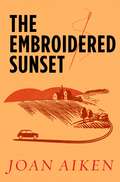- Table View
- List View
Emblemata: Handbuch zur Sinnbildkunst des 16. und 17. Jahrhunderts
Aus den Schatzkammern der europäischen Bibliotheken in einer einmaligen Sammlung zusammen getragen. Die Emblembücher, die einst den europäischen Buchmarkt förmlich überfluteten, unterlagen dem Schicksal der Gebrauchsliteratur. Was an Originalen erhalten blieb, gehört zu den kostbaren Schätzen weniger Sammler oder Bibliotheken und erreicht im Antiquariatshandel Liebhaberpreise. Mit den "Emblemata" wird der Zugang zu diesen für das Verständnis der frühen Neuzeit und des Barock außerordentlich wichtigen Quellen neu erschlossen. Dem Kunst- und Literaturhistoriker, dem klassischen Philologen, der am Nachleben der Antike interessiert ist, und dem Mediävisten wird eine Fülle von schwer zugänglichem Material vorgelegt. Auch für die Sozialforschung, die Religions- und Philosophiegeschichte, für Soziologie, Rhetorik, Psychologie und Pädagogik ist der Band ein Quellenwerk ersten Ranges. Da die lateinischen, französischen und niederländischen Texte des 16. und 17. Jahrhunderts oft schwer verständlich, mitunter von den Autoren selbst absichtlich dunkel gehalten sind, werden den Originalen durchweg deutsche Übersetzungen des Inscriptio und Subscriptio nachgestellt. Die Embleme sind nach acht, teilweise weiter untergliederten Seinsbereichen angeordnet. Dadurch erscheint das einzelne Sinnbild an dem ihm eigenen Ort und in dem ihm zugehörigen Umkreis innerhalb des emblematischen Bilderkosmos.
Emblemata: Handbuch zur Sinnbildkunst des XVI. und XVII. Jahrhunderts. Taschenausgabe
Das Standardwerk - wieder aufgelegt. 4.000 Emblemen aus 47 europäischen Emblembüchern des 16. und 17. Jahrhunderts sind hier in einer einmaligen Sammlung zusammengetragen. Umfasst zusätzlich: Mottoregister, Bildregister, Bedeutungs-Register, Index Rerum Notabilium zum "Physiologus Graecus", Index Rerum Notabilium zu den "Hieroglyphica" des Horapollo, Abkürzungen und Errataverzeichnis
Embodied Activities in Face-to-face and Mediated Settings: Social Encounters in Time and Space
by Elisabeth Reber Cornelia GerhardtThis edited book revisits the concept of social ‘activities’ from an interactional perspective, examining how verbal, vocal, visual-spatial and material resources are deployed by participants for meaning-making in social encounters. The eleven original chapters within this volume analyse activities based on video recordings of naturalistic and naturally occurring social encounters from face-to-face and mediated settings in Chinese, Dutch, English, French, and German. Informed primarily by the methodological approaches of Conversation Analysis and Interactional Linguistics, the authors study embodiment in space and time in three distinct types of situations: objects in space, complex participation frameworks, and affiliation and alignment. Moreover, the book includes a theoretical and methodological discussion of how activities are constituted and visibly embodied in interaction. It will be of interest to students and scholars in sociology and linguistics in general, and face-to-face and mediated interaction in particular.
Embodied Cognition And Shakespeare's Theatre: The Early Modern Body-mind (PDF)
by Laurie Johnson John Sutton Evelyn TribbleThis collection considers issues that have emerged in Early Modern Studies in the past fifteen years relating to understandings of mind and body in Shakespeare's world. Informed by The Body in Parts, the essays in this book respond also to the notion of an early modern 'body-mind' in which Shakespeare and his contemporaries are understood in terms of bodily parts and cognitive processes. What might the impact of such understandings be on our picture of Shakespeare's theatre or on our histories of the early modern period, broadly speaking? This book provides a wide range of approaches to this challenge, covering histories of cognition, studies of early modern stage practices, textual studies, and historical phenomenology, as well as new cultural histories by some of the key proponents of this approach at the present time. Because of the breadth of material covered, full weight is given to issues that are hotly debated at the present time within Shakespeare Studies: presentist scholarship is presented alongside more historically-focused studies, for example, and phenomenological studies of material culture are included along with close readings of texts. What the contributors have in common is a refusal to read the work of Shakespeare and his contemporaries either psychologically ormaterially; instead, these essays address a willingness to study early modern phenomena (like the Elizabethan stage) as manifesting an early modern belief in the embodiment of cognition.
Embodied Cognition and Shakespeare's Theatre: The Early Modern Body-Mind (Routledge Studies in Shakespeare)
by Laurie Johnson John Sutton Evelyn TribbleThis collection considers issues that have emerged in Early Modern Studies in the past fifteen years relating to understandings of mind and body in Shakespeare’s world. Informed by The Body in Parts, the essays in this book respond also to the notion of an early modern ‘body-mind’ in which Shakespeare and his contemporaries are understood in terms of bodily parts and cognitive processes. What might the impact of such understandings be on our picture of Shakespeare’s theatre or on our histories of the early modern period, broadly speaking? This book provides a wide range of approaches to this challenge, covering histories of cognition, studies of early modern stage practices, textual studies, and historical phenomenology, as well as new cultural histories by some of the key proponents of this approach at the present time. Because of the breadth of material covered, full weight is given to issues that are hotly debated at the present time within Shakespeare Studies: presentist scholarship is presented alongside more historically-focused studies, for example, and phenomenological studies of material culture are included along with close readings of texts. What the contributors have in common is a refusal to read the work of Shakespeare and his contemporaries either psychologically or materially; instead, these essays address a willingness to study early modern phenomena (like the Elizabethan stage) as manifesting an early modern belief in the embodiment of cognition.
Embodied Cognition and Shakespeare's Theatre: The Early Modern Body-Mind (Routledge Studies in Shakespeare)
by Laurie Johnson John Sutton Evelyn TribbleThis collection considers issues that have emerged in Early Modern Studies in the past fifteen years relating to understandings of mind and body in Shakespeare’s world. Informed by The Body in Parts, the essays in this book respond also to the notion of an early modern ‘body-mind’ in which Shakespeare and his contemporaries are understood in terms of bodily parts and cognitive processes. What might the impact of such understandings be on our picture of Shakespeare’s theatre or on our histories of the early modern period, broadly speaking? This book provides a wide range of approaches to this challenge, covering histories of cognition, studies of early modern stage practices, textual studies, and historical phenomenology, as well as new cultural histories by some of the key proponents of this approach at the present time. Because of the breadth of material covered, full weight is given to issues that are hotly debated at the present time within Shakespeare Studies: presentist scholarship is presented alongside more historically-focused studies, for example, and phenomenological studies of material culture are included along with close readings of texts. What the contributors have in common is a refusal to read the work of Shakespeare and his contemporaries either psychologically or materially; instead, these essays address a willingness to study early modern phenomena (like the Elizabethan stage) as manifesting an early modern belief in the embodiment of cognition.
Embodied Voices: Representing Female Vocality in Western Culture (PDF)
by Edited by Leslie C. Dunn Nancy A. JonesAs a material link between body and culture, self and other, the voice has been endlessly fascinating to artists and critics. Yet it is the voices of women that have inspired the greatest fascination, as well as the deepest ambivalence, because the female voice signifies sexual otherness as well as a source of sexual and cultural power. Embodied Voices explores cultural manifestations of female vocality in light of current theories of subjectivity, the body, and sexual difference. The fourteen essays collected here examine a wide spectrum of discourses, including myth, literature, music, film, psychoanalysis, and critical theory. Though diverse in their critical approaches, the essays are united in their attempt to articulate the compelling yet problematic intersections of gender, voice, and embodiment as they have shaped the textual representation of women, and women's self-expression in performance.
Embodied VulnerAbilities in Literature and Film (Routledge Interdisciplinary Perspectives on Literature)
by Gámez-Fernández, Cristina M Miriam Fernández-SantiagoEmbodied VulnerAbilities in Literature and Film includes a collection of essays exploring the ways in which recent literary and filmic representations of vulnerability depict embodied forms of vulnerability across languages, media, genres, countries, and traditions in the late 20th and early 21st centuries. The volume gathers 12 chapters penned by scholars from Japan, the USA, Canada, and Spain which look into the representation of vulnerability in human bodies and subjectivities. Not only is the array of genres covered in this volume significant— from narrative, drama, poetry, (auto)documentary, or film— in fiction and nonfiction, but also the varied cultural and linguistic coordinates of the literary and filmic texts scrutinized—from the USA, Canada, Spain, France, the Middle East, to Japan. Readers who decide to open the cover of this volume will benefit from becoming familiar with a relatively old topic— that of vulnerability— from a new perspective, so that they can consider the great potential of this critical concept anew.
Embodied VulnerAbilities in Literature and Film (Routledge Interdisciplinary Perspectives on Literature)
Embodied VulnerAbilities in Literature and Film includes a collection of essays exploring the ways in which recent literary and filmic representations of vulnerability depict embodied forms of vulnerability across languages, media, genres, countries, and traditions in the late 20th and early 21st centuries. The volume gathers 12 chapters penned by scholars from Japan, the USA, Canada, and Spain which look into the representation of vulnerability in human bodies and subjectivities. Not only is the array of genres covered in this volume significant— from narrative, drama, poetry, (auto)documentary, or film— in fiction and nonfiction, but also the varied cultural and linguistic coordinates of the literary and filmic texts scrutinized—from the USA, Canada, Spain, France, the Middle East, to Japan. Readers who decide to open the cover of this volume will benefit from becoming familiar with a relatively old topic— that of vulnerability— from a new perspective, so that they can consider the great potential of this critical concept anew.
Embodying Difference: Critical Phenomenology and Narratives of Disability, Race, and Sexuality
by Simon DickelThis book explores how phenomenological ideas about embodiment, perception, and lived experience are discussed within disability studies, critical race theory, and queer studies. Building on these disciplines, it offers readings of memoirs and novels that address the consequences of stigmatization and the bodily dimensions of social differences. The texts include Robert F. Murphy’s The Body Silent, Simi Linton’s My Body Politic, Rod Michalko’s The Two-in-One: Walking with Smokie, Walking with Blindness, three memoirs by Stephen Kuusisto, Vincent O. Carter’s The Bern Book, as well as two novels, Matthew Griffin’s Hide and Armistead Maupin’s Maybe the Moon. All of the texts discussed in this book negotiate the significance of bodily and perceptual habits, the influence of language and culture on embodiment, the importance of relationality and community, the severe effects of misrecognition, and the possibilities of emancipation and social recognition. Hence, they are read as pioneering contributions to the emerging field of critical phenomenology.
Embodying Gender and Age in Speculative Fiction: A Biopsychosocial Approach (Children's Literature and Culture)
by Derek J. ThiessFollowing scholarship on gender in science fiction, this book explores the limits of considering age as a social construction, positing that an acknowledgement of aged bodies necessarily changes the way we read both age and science fiction. The volume employs contemporary clinical psychology, the biopsychosocial model, to demonstrate that age is an important and neglected topic relevant to the study of speculative fiction. While gender offers a vocabulary, the biopsychosocial approach provides a method to consider age (and gender) as an embodied synthesis of physicality, psychology, and social environment. This respected model of clinical psychology allows a unique and innovative lens through which to read age and the body in literature. Thiess offers readings of established sf classics including Octavia Butler’s Parable series; Orson Scott Card’s Ender’s Game; and cyberpunk authors such as Bruce Sterling, Pat Cadigan, and Neal Stephenson, also exploring more mainstream speculative works including Stephanie Meyer’s Twilight series and Joss Whedon’s Firefly/Serenity. Visiting topics such as care work, sexuality, sport, and the military in these works, the book demonstrates that acknowledging a more fully embodied age is not only necessary for the individual subject, but will also enrich our understanding of other social categories, including gender and race. Taking a constructive—rather than adversarial—stance, this book does not merely question how much one can ethically and responsibly "bend" age, but suggests there is a great deal to learn when one explores those limits.
Embodying Gender and Age in Speculative Fiction: A Biopsychosocial Approach (Children's Literature and Culture)
by Derek J. ThiessFollowing scholarship on gender in science fiction, this book explores the limits of considering age as a social construction, positing that an acknowledgement of aged bodies necessarily changes the way we read both age and science fiction. The volume employs contemporary clinical psychology, the biopsychosocial model, to demonstrate that age is an important and neglected topic relevant to the study of speculative fiction. While gender offers a vocabulary, the biopsychosocial approach provides a method to consider age (and gender) as an embodied synthesis of physicality, psychology, and social environment. This respected model of clinical psychology allows a unique and innovative lens through which to read age and the body in literature. Thiess offers readings of established sf classics including Octavia Butler’s Parable series; Orson Scott Card’s Ender’s Game; and cyberpunk authors such as Bruce Sterling, Pat Cadigan, and Neal Stephenson, also exploring more mainstream speculative works including Stephanie Meyer’s Twilight series and Joss Whedon’s Firefly/Serenity. Visiting topics such as care work, sexuality, sport, and the military in these works, the book demonstrates that acknowledging a more fully embodied age is not only necessary for the individual subject, but will also enrich our understanding of other social categories, including gender and race. Taking a constructive—rather than adversarial—stance, this book does not merely question how much one can ethically and responsibly "bend" age, but suggests there is a great deal to learn when one explores those limits.
Embodying Memory in Contemporary Spain
by Alison Ribeiro de MenezesThis innovative book examines the emergence of a memory discourse in Spain since the millennium, taking as its point of departure recent grave exhumations and the "Law of Historical Memory." Through an analysis of exhumation photography, novels, films, television, and comics, the volume overturns the notion that Spanish history is pathological.
Embrace: Book 1 (Embrace #1)
by Jessica ShirvingtonI felt myself slipping away, losing myself to the senses. 'Kiss me,' I whispered. Violet Eden has only ever wanted to be with Lincoln. But when he reveals a secret so powerful it could tear them apart, her world spins out of control. Then she meets Phoenix. Intense and beautiful, Violet is helplessly drawn to him...Caught up in a battle between light and dark - where angels seek vengeance and humans are warriors - Violet must decide how much she's willing to sacrifice. And who she can love...
Embrace: Violet Eden Chapters: Book One (Violet Eden Chapters)
by Jessica ShirvingtonI slowly opened my eyes. The sun speared its first bright rays of golden orange into the sky and I leapt from the cliff, with the sorrowful knowledge that no matter what the outcome, at least part of me would die that day…'Violet Eden is dreading her seventeenth birthday dinner. After all, it's hard to get too excited about the day that marks the anniversary of your mother's death. The one bright spot is that Lincoln will be there. Sexy, mature and aloof, he is Violet's idea of perfection. But why does he seem so reluctant to be anything more than a friend?After he gives her the world's most incredible kiss – and then abandons her on her front doorstep – Violet is determined to get some answers. But nothing could have prepared her for Lincoln's explanation.Without warning, Violet's world is turned upside down. She never believed in God, let alone angels...As Violet gets caught up in an ancient battle between dark and light, she must choose her path. The wrong choice could cost not only her life, but her eternity...'Beautifully written . . . sophisticated and exciting' - Goodreads.com'A captivating story of destiny, love and dark forces that you won't be able to put down' - Kate Waterhouse'. . . smart, edgy and addictive . . . A must-read for paranormal fans young and old' - Kirkus ReviewsThe Violet Eden ChaptersBook One: EmbraceBook Two: EnticeBook Three: EmblazeBook Four: EndlessBook Five: Empower
Embrace The Dawn (Mills And Boon Vintage 90s Modern Ser. #260)
by Jackie SummersThere Was No Escape Fleeing an arranged betrothal, Anne Lowell ran straight into the arms of the infamous highwayman, The Black Fox. Yet was the man who had become her heart's desire a rogue, or a noble thief who fought to restore his King?
Embrace My Heart: Seduced By Mr. Right Embrace My Heart Snowy Mountain Nights Sin City Temptation (Kimani Hotties #67)
by AlTonya WashingtonIs she ready to trust again?
Embrace The Night (Bride Series #Bk. 3)
by Karen ChanceRecently named the world’s chief clairvoyant, Cassandra Palmer still has a thorn in her side. As long as Cassie and a certain master vampire - the sizzling-hot Mircea - are magically bound to each other, her life will never be her own …The spell that binds them can only be broken with an incantation found in the Codex Merlini, an ancient grimoire. The Codex’s location has been lost in the present day, so Cassie will have to seek it out in the only place it can still be found - the past.But Cassie soon realizes the Codex has been lost for a reason. The book is rumored to contain dangerous spells, and retrieving it may help Cassie to deal with Mircea, but it could also endanger the world…
Embrace The Twilight: Twilight Hunger Embrace The Twilight Run From Twilight Edge Of Twilight Blue Twilight Prince Of Twilight (Mills And Boon Silhouette Ser. #8)
by Maggie ShayneHer beauty is spellbinding. Her hunger is insatiable. Her power is immortal.
Embraced by Blood (Mills And Boon Nocturne Ser. #2)
by Laurie LondonTwo vampire coalitions are waging war… …And Alfonso is a hunted man.
Embraced By Darkness: Number 5 in series (Riley Jenson Guardian #5)
by Keri ArthurJust when guardian Riley Jenson thought her life was getting back on track, fate throws another curve ball. The alpha of her estranged pack - and the man who tried to kill her by throwing her off a mountainside - demands her help to find his missing granddaughter. Riley would love to refuse, but if she does, her mother dies. And if that isn't enough, something is tearing humans to shreds, and it's up to Riley to track down the killer before another soul is embraced by darkness
Embracing the Lie: Ding Ling and the Politics of Literature in the People's Republic of China (Non-ser.)
by Charles J. AlberThis volume is the first serious attempt to reconstruct Ding Ling's biography during the last few decades of her life. Most Westerners know her as a progressive woman writer who became famous during the May 4 Movement, championed its values in Yan'an and was criticized in the rectification campaigns that followed. Few know about her life afterward and the arduous process of rehabilitation. Here for the first time readers will learn about her life in the Great Northern Wasteland, solitary confinement in Qincheng prison, her visit to the United States, participation in the spiritual pollution campaign, and finally, the attempt to launch the journal China. All of this puts a new perspective on the life of one of China's most preeminent woman writers.Alber includes considerable new information about the rectification campaigns of the late fifties, supplemented by a series of interviews with the author and her contemporaries in the years 1980 and 1981, the very point when she began to turn left and to compromise her progressive beliefs. Ding Ling is generally acknowledged as a major figure of the May 4 Movement and an ardent admirer of Lu Xun. As such, the study sheds light on the legacy of China's greatest writer and the influence of Western ideals on contemporary Chinese literature. The primary audience is the educated reader who has an interest in contemporary Chinese literature and politics. It should be especially interesting to women, but the coverage is broad enough to include anyone interested in the intellectual history of China.
The Embroidered Book
by Kate HeartfieldBrimming with romance, betrayal, and enchantment, The Embroidered Book reveals and reimagines a dazzling period of history as you have never seen it before.
The Embroidered Sunset
by Joan Aiken'Miss Aiken’s book is immensely enjoyable – her gift for gothic romantic charm is as effectively deployed as ever' TLSLucy Culpepper doesn’t take no for an answer. An aspiring pianist she dreams of being taught by the renowned Max Benovek and will defy all odds – life threatening illness, a missing great aunt, and a disgruntled uncle – to achieve it.After finding out her Uncle Wilbie has used up her college fund, Lucy discovers a selection of enchantingly beautiful paintings in the attic. Being the miserly man he is, Wilbie wants to keep any possible profits for these paintings and bargains on sending Lucy to England to find the artist – Great-aunt Fennel. Knowing Benovek lives in London she snaps up the opportunity and undertakes the adventure of a lifetime. But though Benovek proves easy to find and immediately takes Lucy to heart, she sets off to Yorkshire only to find that her old aunt Fennel has vanished. Lucy’s search entangles her in a mystery of murder and deceit . . . can they discover who is the real aunt Fennel?Awardwinning author Joan Aiken brings a shocking finale to a witty and entertaining plot full of unexpected twists and turns in modern suspense novel, The Embroidered Sunset.




